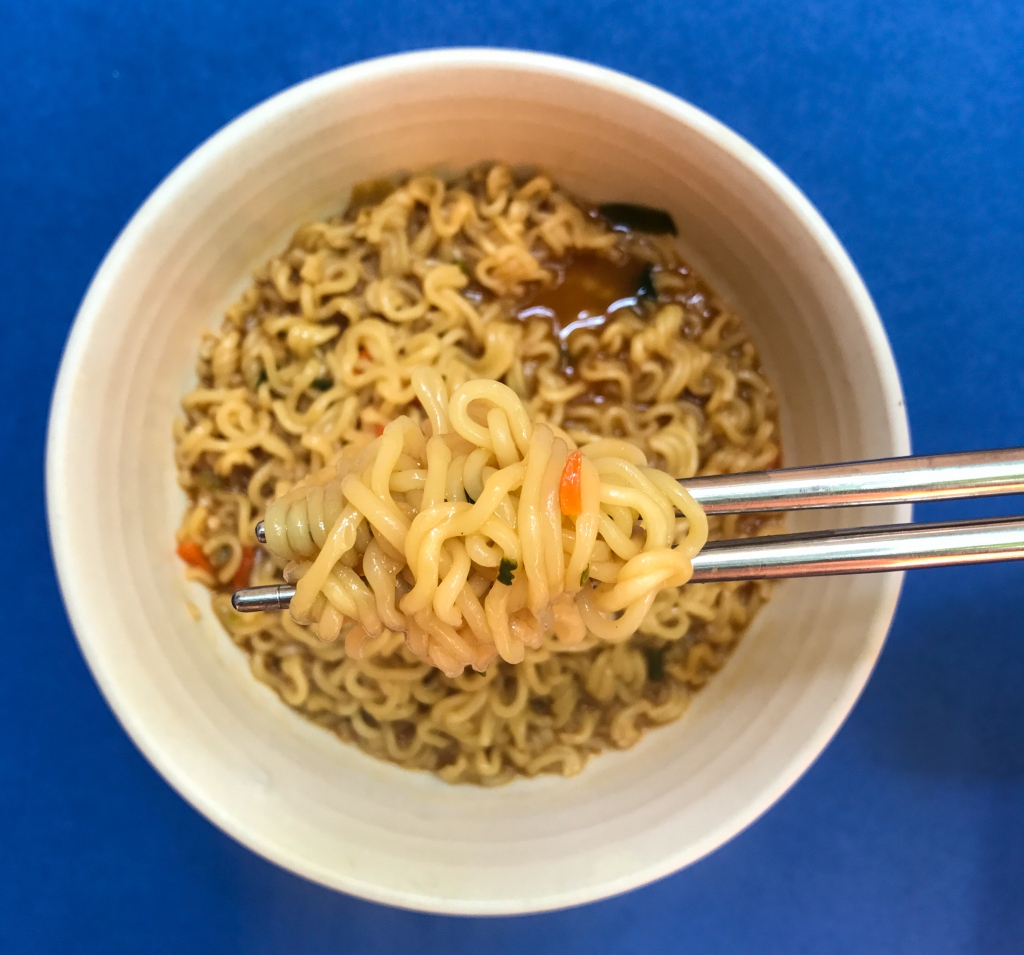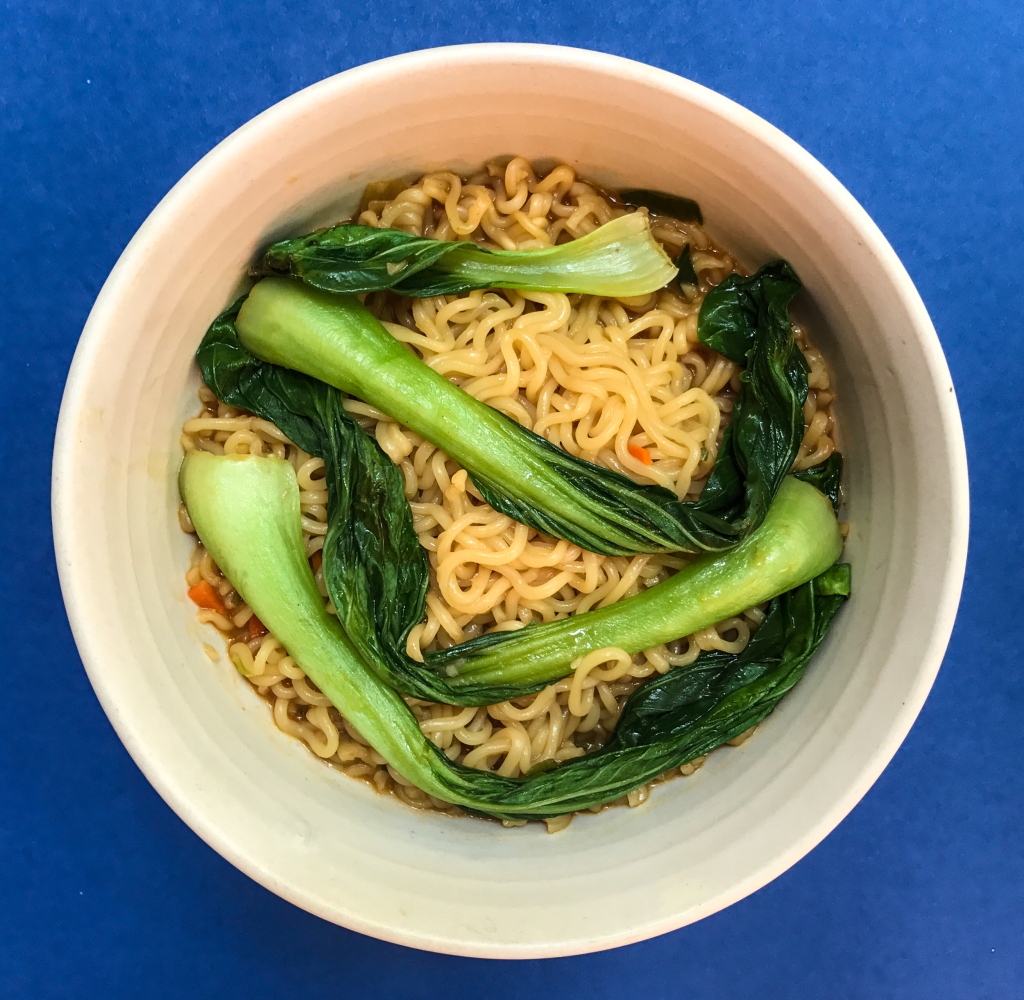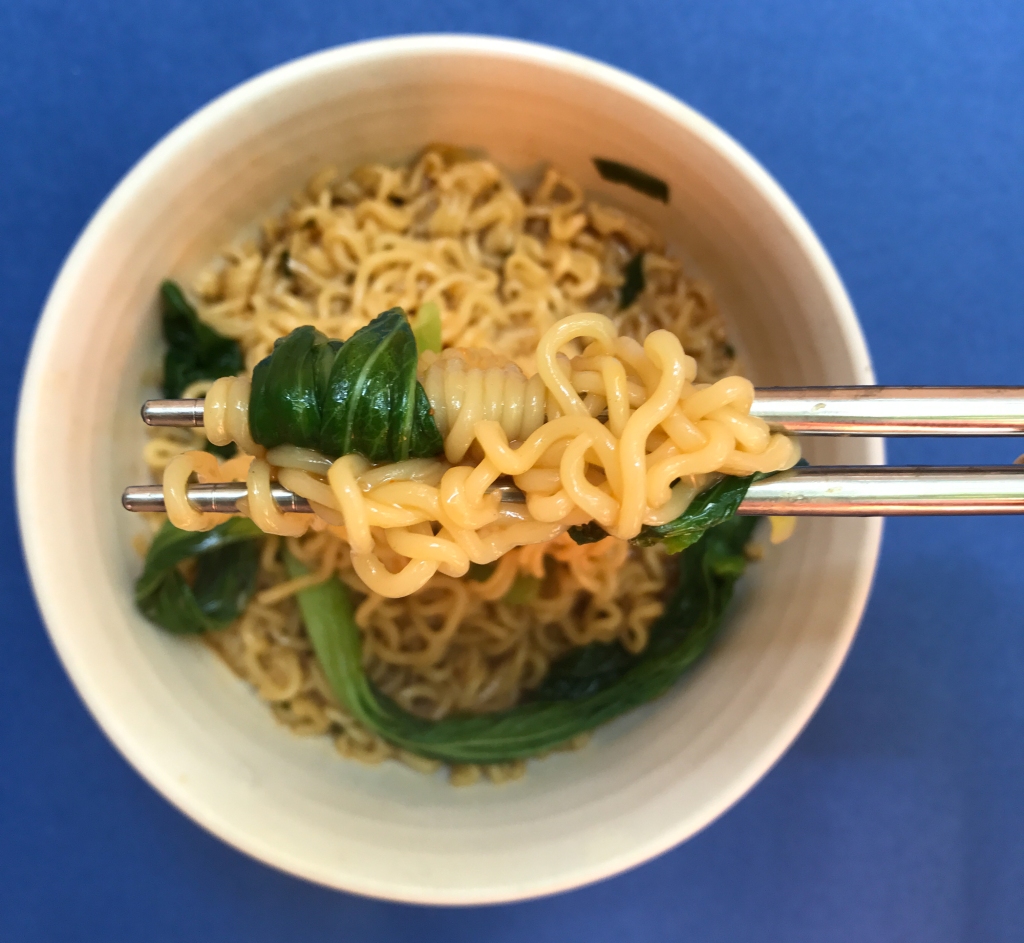I have zero idea how to pronounce this correctly! Anyone who can help?

Budae Jjigae is popularly known as “sausage stew” or “army base stew” in Korea. It was invented in 1954 and the dish was created shortly after the Korean war ended using all the smuggled surplus foods from the US army base. Main ingredients of the original dish are – ham, hot dogs, spam, baked beans, kimchi etc.
It is said that budae-jjigae begun as a buttery stir-fried snack made of sausages, ham, cabbages and onions to accompany makgeolli (rice wine), but later on, anchovy broth flavored with gochujang and kimchi was added to create the stew that is enjoyed today.(sourec : Wikipedia).
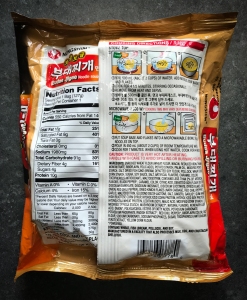
Cooking instructions-
- Boil 500 ml of water. Add noodles, soup base and flakes.
- Cook for 4 ½ minutes, stirring occasionally.
- Remove from heat and serve.

All the traveling took a toll on this block on noodles (it was supposed to be a round block of noodles). But these still look promising kind of ramyun noods!

The soup base has a beautiful orange color to it and heady aroma of spices.
I was specially excited about the flakes for this one! It has – fish cakes, dried kimchi (!!!) in the form of napa cabbage and red chilli pepper and some dried green onions.

Firstly, and most importantly, the kimchi aka the cabbage was crunchy even after cooking!! Yes, you heard that right. And for someone like me who has zero taste for fish cakes, well you will start developing a taste after eating these ones!

As expected, the noodles are bomb – great quality, good chew and texture!
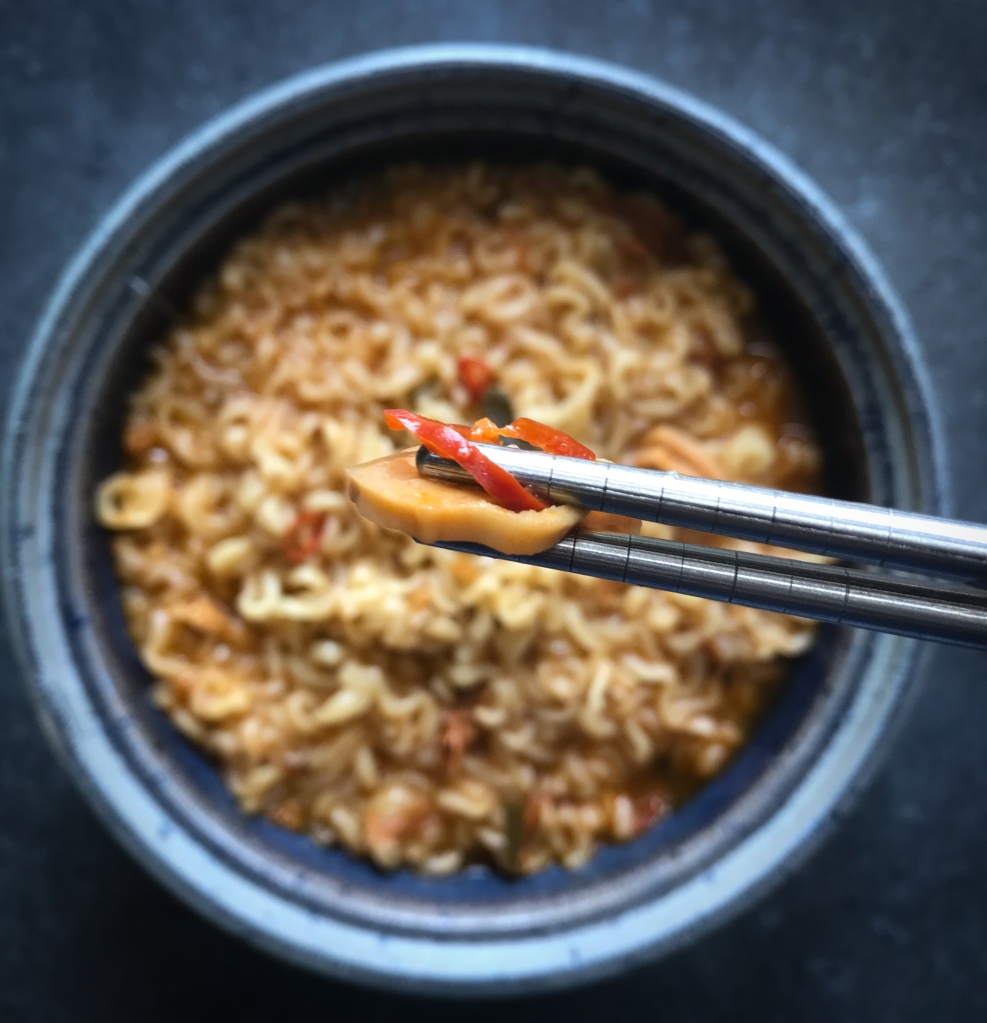
The broth is all kinds of wonderful too, its spicy but not too spicy and leaving a lingering after taste that I rather like.
All in all, this makes for a perfect bowl of comfort from Korea!
Rating: 4.75/5
Unauthorized use and/or duplication of this material without express and written permission from this blog’s author and/or owner is strictly prohibited.
Excerpts and links may be used non-commercially. Provided that full and clear credit is given to Shruti Gupta and Instant Noodle Me with appropriate and specific direction to the original content.






